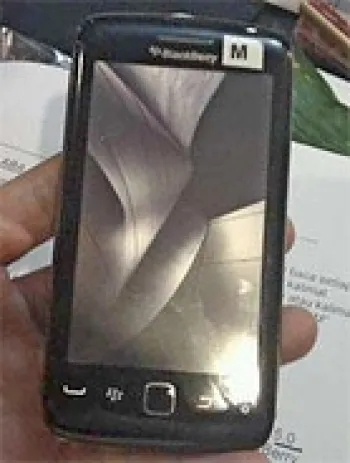Unveiling BlackBerry Pearl 8120 Specs Prices Pros & Cons

Overview of BlackBerry Pearl 8120
The BlackBerry Pearl 8120, announced in October 2007, represents a noteworthy entry in the smartphone market of its time. Renowned for its compact design and functional features, the device is part of BlackBerry's Pearl series, well-regarded for combining business utilities with consumer-friendly features. Though discontinued now, the device carved a niche for itself during its operational years.
Design and Build
With dimensions of 107 x 50 x 14 mm and weighing just 91 g, the BlackBerry Pearl 8120 is a lightweight and portable device, making it easy to carry around. Its hallmark is the Half-QWERTY keyboard, which facilitates quick typing while maintaining a compact form factor. The device supports a Mini-SIM, emphasizing its compatibility with the technological standards of its release period.
Display
The Pearl 8120 features a 2.2-inch LCD display that supports 65K colors, with a resolution of 240 x 260 pixels. With a screen-to-body ratio of approximately 29.1%, it offers a clear display suited for messaging and basic web browsing. The display is sufficient for its size but limited when compared to the vibrant displays found in more modern smartphones.
Performance and Software
Powered by a 32-bit Intel XScale PXA272 312 MHz processor, the BlackBerry Pearl 8120 gratifies basic smartphone needs such as emailing, messaging, and running simple applications. It operates on the BlackBerry OS, which was highly regarded for its secure messaging services and reliable performance. Though not built for heavy multitasking or modern applications, the OS served its purpose during the era of its release.
Memory and Storage
The device comes with 32MB RAM and 64MB ROM, supplemented by a microSDHC slot for expandable storage. This feature ensures that users can store additional data, albeit limited by today’s standards, ensuring it can handle essential storage demands for pictures, contacts, and emails.
Camera Capabilities
The BlackBerry Pearl 8120 features a single 2MP rear camera equipped with LED flash. Although basic, the camera captures decent images and supports video recording, which was sufficient for casual photography and quick video clips at the time.
Connectivity
On the connectivity front, the Pearl 8120 is equipped with GSM technology along with EDGE and GPRS for mobile internet connectivity. It supports Wi-Fi 802.11b/g and Bluetooth 2.0, making it versatile for wireless connections. However, it lacks built-in GPS and radio, although it supports miniUSB 2.0 for data transfer and charging purposes.
Audio and Multimedia
It supports vibration alerts and MP3 and WAV ringtones, offering a standard set of multimedia capabilities for its time. Moreover, the presence of a 3.5mm audio jack is a notable feature for connecting headphones and external audio devices.
Battery Life
The BlackBerry Pearl 8120 comes with a removable Li-Ion 900 mAh battery, providing a standby time of up to 360 hours and a talk time of up to 4 hours. This battery life was quite efficient given the specs and usage patterns during the period.
Additional Features and Miscellaneous
The smartphone includes an HTML browser for basic web surfing, reinforcing its suitability for business communications and minimal browsing needs. The Pearl 8120 is available in Titanium, Blue, and Sunset colors, adding a touch of variety for users seeking a phone with aesthetic options. Its SAR values and affordable price point of about 90 EUR made it a viable choice for professionals and personal users alike.
Conclusion
Despite being discontinued, the BlackBerry Pearl 8120 remains a noteworthy device within the historical context of mobile technology. It offered a balance of functionality and simplicity, encapsulated in a compact design. Although it cannot compete with modern smartphones in terms of features or processing power, it still holds a special place for enthusiasts and those nostalgic for the early era of BlackBerry devices.
Key Features of BlackBerry Pearl 8120
- Compact and lightweight design: 107 x 50 x 14 mm, weighing 91 g
- Half-QWERTY keyboard for easier text input
- 2.2 inches display with 240 x 260 pixel resolution
- Powered by 32-bit Intel XScale PXA272 312 MHz CPU
- Expandable memory via microSDHC card slot
- 2 MP main camera with LED flash and video recording capability
- Connectivity options: Wi-Fi 802.11b/g and Bluetooth 2.0
- HTML browser for internet access
- Removable Li-Ion 900 mAh battery with up to 360 hours standby time
- Available in multiple colors: Titanium, Blue, Sunset
- Affordable pricing at approximately 90 EUR
BlackBerry Pearl 8120 Drawbacks
- Discontinued model, limiting support and availability.
- Half-QWERTY keyboard may be difficult to use for some users.
- Low screen-to-body ratio (~29.1%) reduces display area considering the phone's size.
- Limited display colors (65K), which may affect image viewing quality.
- Low resolution screen (240 x 260 pixels) leading to lower pixel density (~161 ppi).
- Old operating system (BlackBerry OS) with limited app support.
- Very limited internal memory (32MB RAM, 64MB ROM).
- Absence of a front-facing (selfie) camera.
- Lack of advanced connectivity features like GPS or Radio.
- Low battery capacity (900 mAh), providing limited talk time (up to 4 hours).
- Older Bluetooth version (2.0), which may limit compatibility with modern devices.

View Also
More Phones
All Rights Reserved +14266 Phones © Mobilawy 2025

























